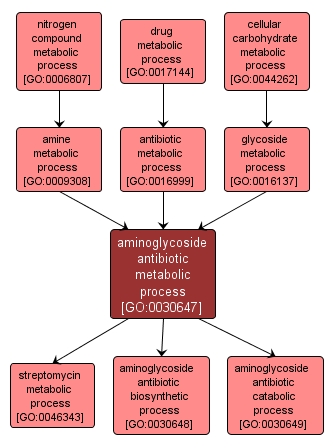| Desc: |
The chemical reactions and pathways involving an aminoglycoside antibiotic, any member of a group of broad spectrum antibiotics, of similar toxicity and pharmacology, that contain an aminodeoxysugar, an amino- or guanidino-substituted inositol ring, and one or more residues of other sugars. The group includes streptomycin, neomycin, framycetin, kanamycin, paromomycin, and gentamicin. |














